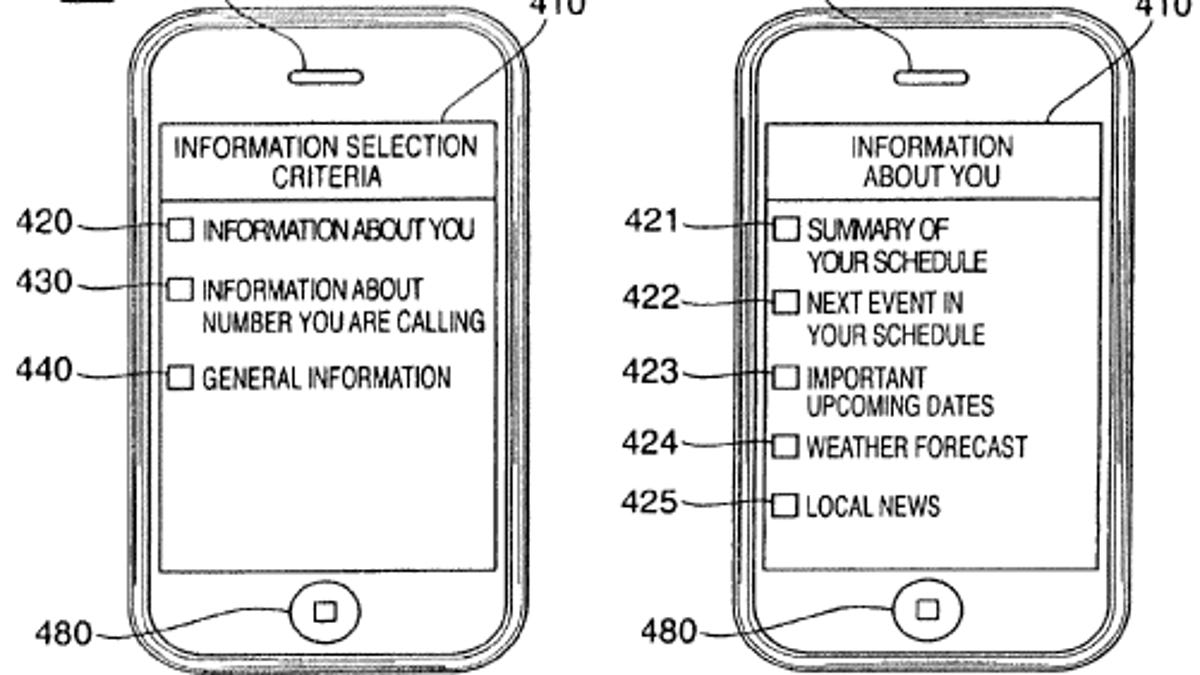Apple patents way to show info to callers on hold
Callers placed on hold could see anything from local news and weather reports to details about the person being called.

Waiting on hold may not be so dull if a newly patented Apple technology ever ends up a reality.
Granted to Apple today by the U.S. Patent and Trademark Office, a patent called "Communications system that provides user-selectable data when user is on-hold" envisions a system for showing useful and interesting information to mobile phone callers waiting on hold.
The information being displayed would be adaptive and contextual, according to the patent, meaning it would vary depending on the caller, the caller's location, the date and time, and other items. As one example, the caller might see details describing the last conversation or future appointments with the person being called. As another example, the caller could be treated to local news and weather reports based on their locale.
Advertisers could even buy space on the phone, the patent explained, with the extra revenue helping defray the cost of the call.
As such, some of the details displayed would be pulled from the phone itself, while other details would be obtained via the Internet. The caller would be presented with a choice of which information to display.
The patent refers to cell phones as one recipient of the technology. But the on-call system could extend beyond the mobile world.
The present invention can be incorporated into many types of communications systems (e.g., conventional telephone systems, cellular telephone systems, VOIP telephone systems, videoconferencing systems, and radio communications systems). For example, cellular telephone systems can present adaptive information when a user is on-hold. Videoconferencing systems are another example of a type of communications system which can incorporate the principles of the present invention.
For the technology to work, each caller would have to have a profile on the phone so the system can identify that person and present the appropriate on-hold information.
The information could even stay on the screen after the caller is no longer on hold. It would simply appear as a semi-transparent overlay so that the caller can still see important background data, such as the length of the call.
(Via AppleInsider)

